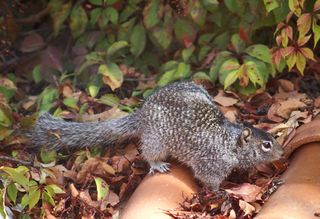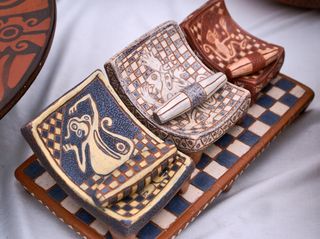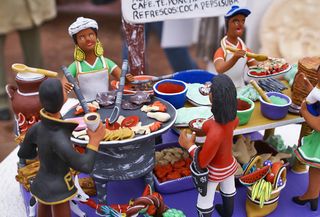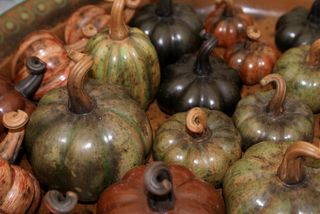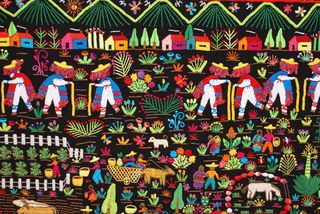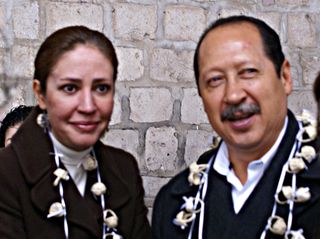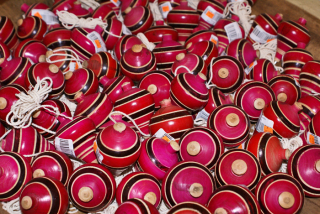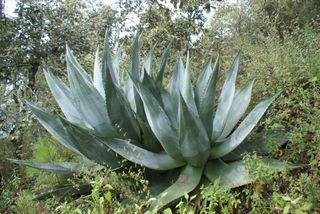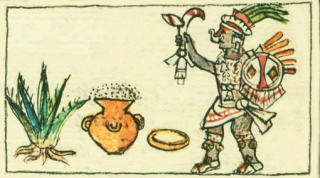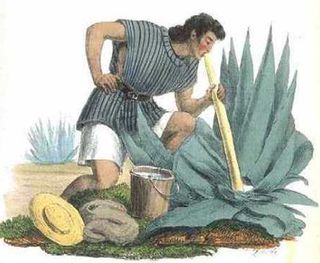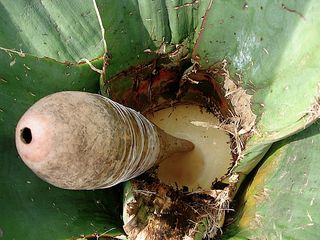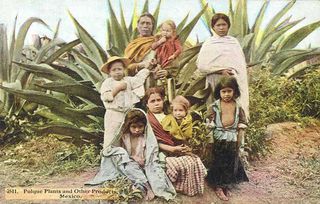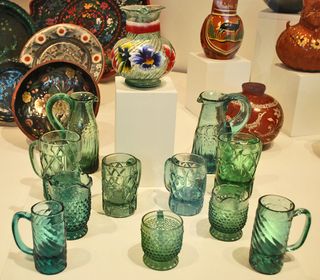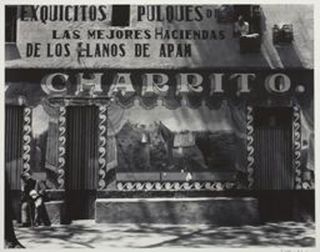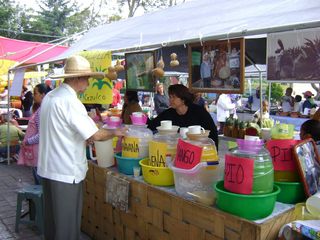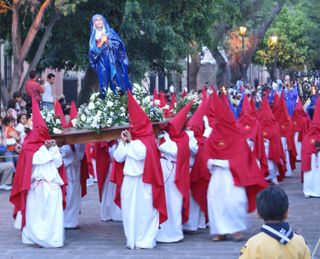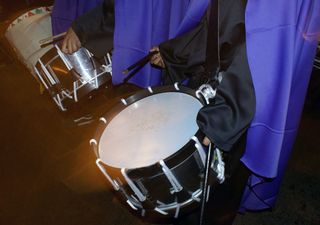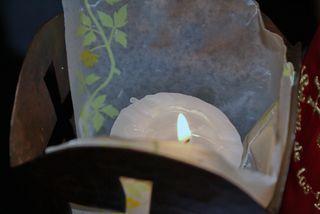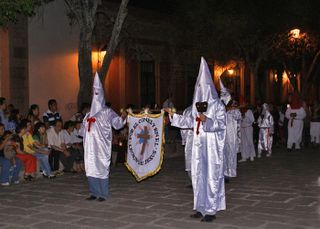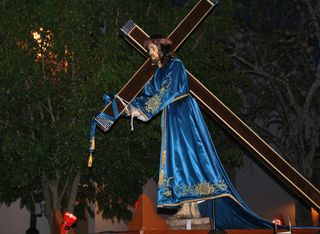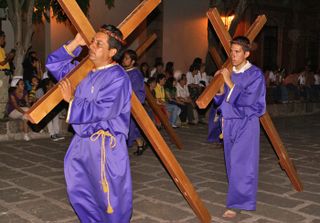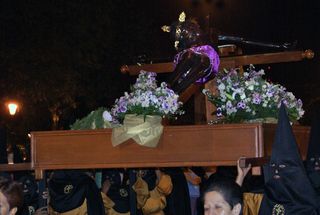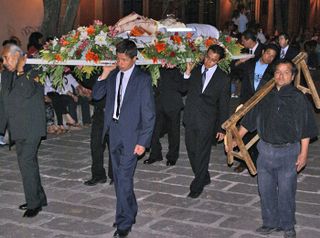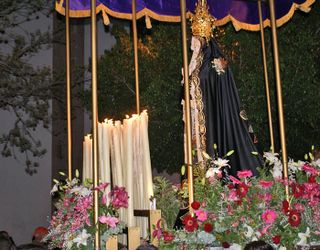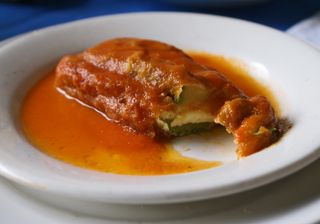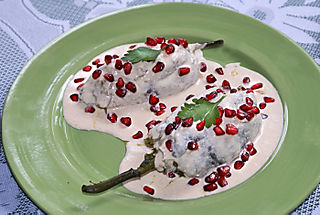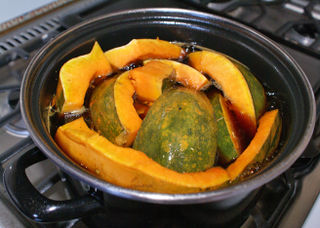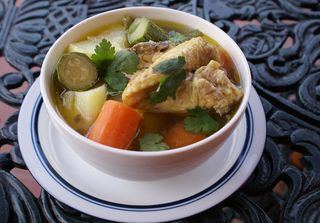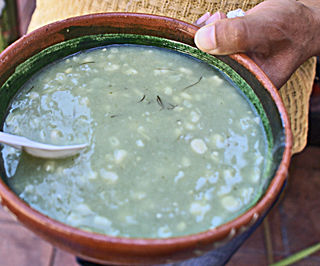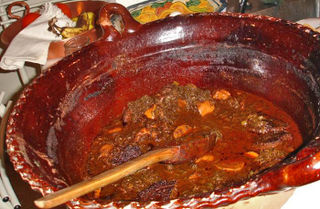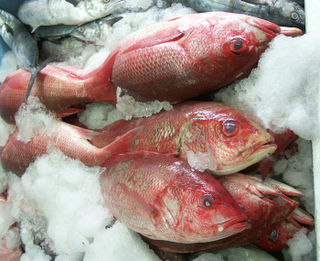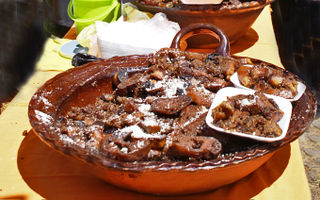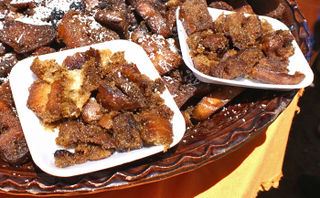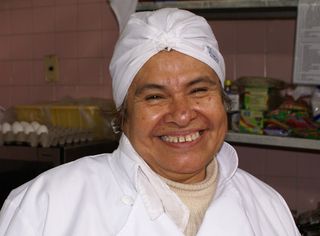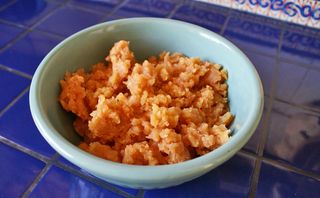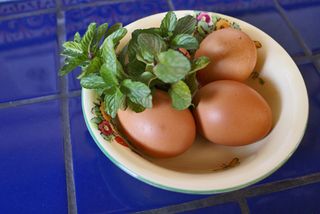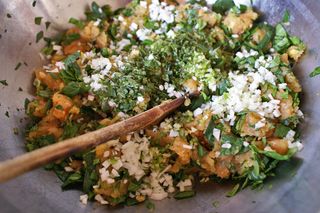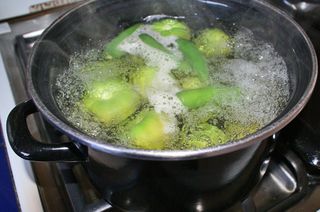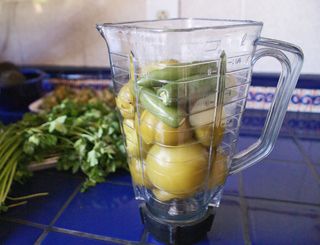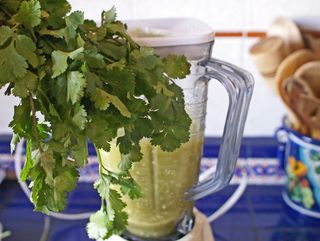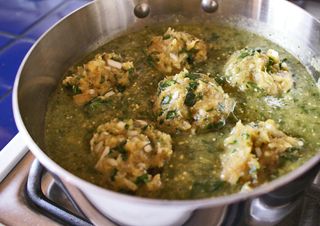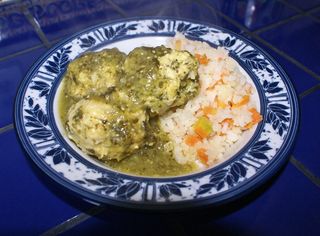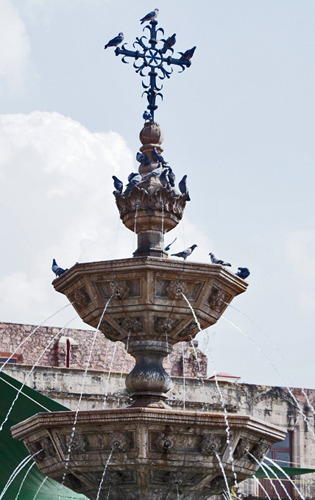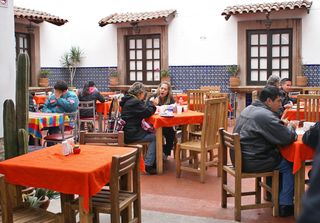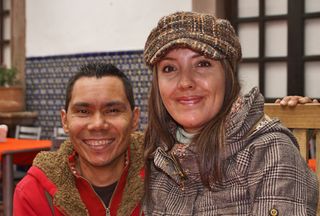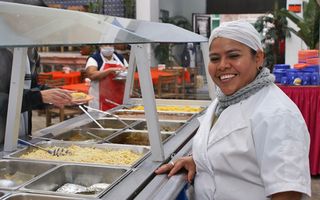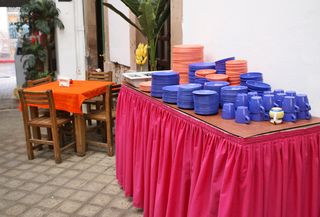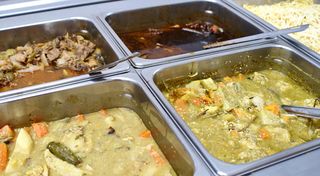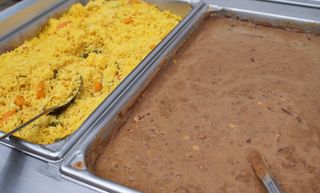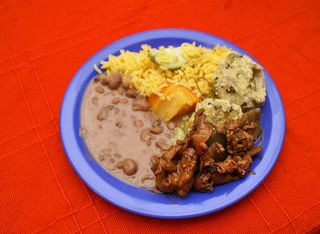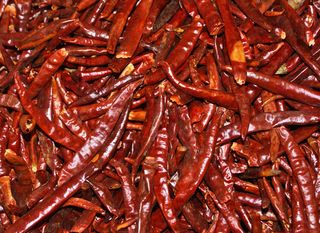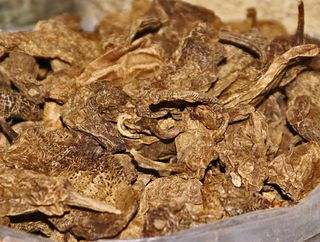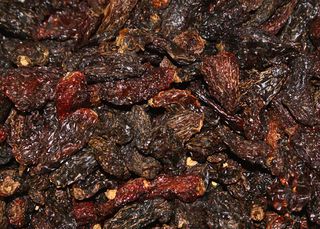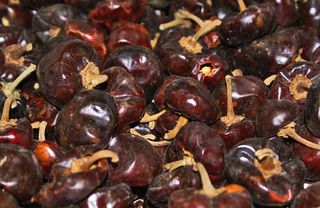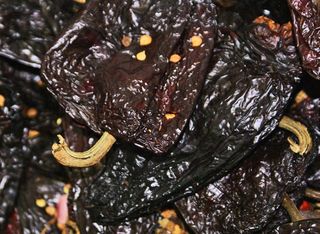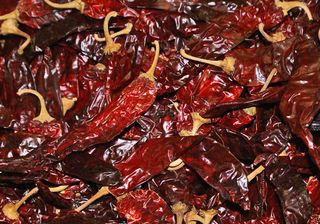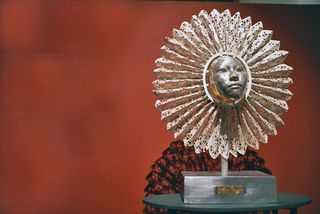
La Tehuana (1996). Silver-plated copper, resin, and electroformed lace fabric. Click on all of the photographs for a larger view of each sculpture.
In September 2009, Mexico Cooks! met and interviewed James Metcalf and Ana Pellicer, internationally acclaimed artists who are long-time residents of Santa Clara del Cobre, Michoacán. Privileged to photograph a number of their sculptures at their home in September, I was nevertheless unprepared for the visual and emotional impact of Poemas Forjados (Hand-wrought Poems), a lifetime retrospective of Ana Pellicer's work that opened on March 27, 2010 at the Palacio Clavijero in Morelia.
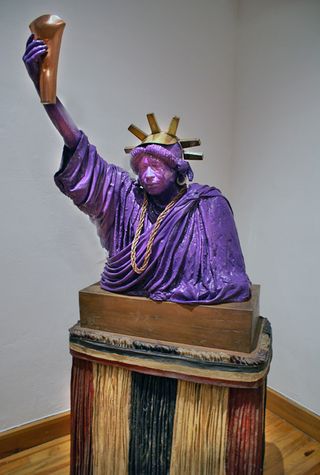
La Libertad Purépecha (1987). Mixed media: fiberglass, wood, plaster of Paris, textiles, copper, and brass. In honor of Frederic Auguste Bartholdi, the French sculptor who created the original Statue of Liberty, the pleated skirt which represents the traditional guari (Purhépecha woman) garment is the colors of the French flag. I asked Ana Pellicer why she chose to create the body of the sculpture in purple. The simple answer: "She is in mourning."
The 75-sculpture exhibit, which fills several huge rooms at the Clavijero, is divided into themes: Secretos, Mujer, Luz, Poder, Libertad, and Juego (Secrets, Woman, Light, Power, and Sport).
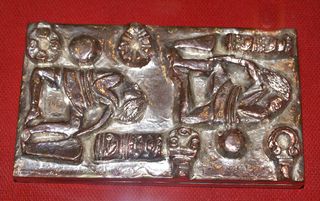
Caja, Jugadores de Pelota (Box, Ball Players), Serie Secretos 2003. Hammered copper, repoussé and silver plate, approximately 20cm long, 12cm wide, and 3cm deep. The sculptured box top represents the pre-Hispanic Purhépecha ball game that may have been the forerunner of both baseball and basketball. The 'Secrets' portion of the exhibit includes boxes, books, clouds, and other sculptures.
Ana Pellicer sculpts predominately in copper, hand-forging and
hammering every piece. She works directly on the metal in the
traditional pre-Hispanic "technique of fire" that is still practiced by
Santa Clara del Cobre's artisans. She begins her labor directly on the tejo (round ingot) of copper. Her sculptures also may include bronce (bronze), hule
(hand-harvested rubber), chuspata (lake reed), resina (resin), latón (brass),
and plata (silver).
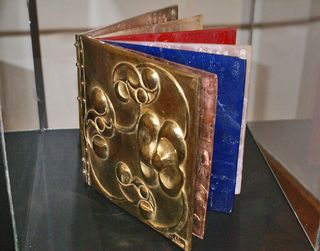
Libro 1 (Book 1), 1970. Hammered repoussé brass, plastic, and paper, approximately 20cm square. Ana Pellicer produced this and other mixed-media sculptured books to record her creative process.
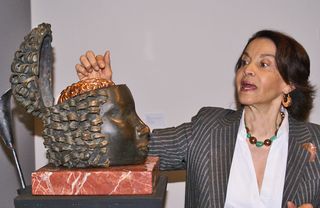
La Medusa, Serie Mujeres, 2010. Cast bronze, repoussé copper, marble and wood. Ana Pellicer points out details of the sculpture; the Medusa's head opens on a hinge, revealing her brain.
For more than two years, Ana Pellicer worked to gather the pieces in this current exhibit. Dispersed in public and private collections around the world, the owners have loaned the sculptures to Michoacán, where they were originally made. "It gives me so much pride to exhibit my sculptures in the enormous rooms of the Palacio Clavijero, where the proportions of the building suit the proportions of the work," said Pellicer.
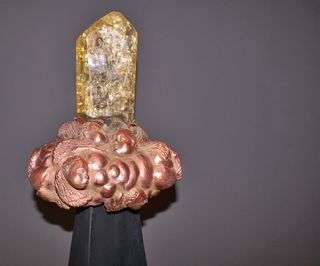
Querubines, Serie Luz, 1998. Repoussé copper, resin, and iron. Many of the pieces in the series Light include resin, which collects and concentrates the light in each of the sculptures.
The recurrent themes of Pellicer's work–light, power, women, secrets, sport–develop in strength and beauty as the viewer passes from gallery room to gallery room in the Palacio Clavijero. Quotations from philosophers as diverse as Greece's 700 BC poet Sappho and Mexico's 15th century AD poet Netzahuacóyotl dot the exhibit's walls, both taking from and giving depth and comprehension to the works. From Netzahuacóyotl, for example:
"Percibo lo secreto, lo oculto:
Así somos,
somos mortales.
de cuatro en cuatro nosotros los hombres,
Todos habremos de irnos,
todos habremos de morir en la tierra…"
"I perceive the secret, this hidden thing:
we are this way,
we are mortals.
Four at a time we men,
All of us must leave,
All of us must die to this earth…"

Arracada Monumental de la Libertad (Monumental Earring for the Statue of Liberty), 1986. The hand-forged hollow copper earring weighs approximately 45 pounds. Ana Pellicer sculpted the single earring and several other pieces of jewelry to fit the Statue of Liberty on the occasion of her 100th birthday.
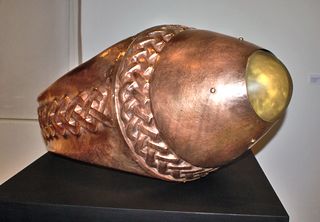
Anillo de la Libertad (Ring for the Statue of Liberty), 1986. The repoussé copper and resin ring, made to the same scale as the earring above, fits the ring finger of the Statue of Liberty. The statue measures 305 feet from its base to the tip of her torch.
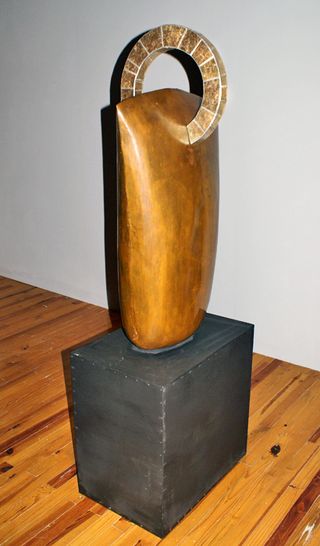
Objeto Encontrado en la Tumba de una Reina (Object Found in the Tomb of a Queen), Serie Poder, 1996. Hammered copper, glass, and tempered mica. The axe is the pre-Hispanic Purhépecha power symbol. Ana Pellicer described this piece as el hacha santificada (the sanctified ax) because of its halo.

Beisbol (Baseball), Serie Juego 1999. The baseball sculpture measures approximately 70cm in diameter. Pellicer laughingly said, "I signed this huge baseball as if I were a sports star!"
Ana Pellicer herself embodies the five themes of this magnificent retrospective exhibit. A strong, intelligent woman, filled with light, with power, with humor, and with her own creative secrets, Pellicer's life work offers us a penetrating look into her world and our own. Do not miss this opportunity to share her vision.
Poemas Forjados de Ana Pellicer
Palacio Clavijero
Nigromante No. 79, between Av. Madero
Poniente y Santiago Tapia
Colonia Centro
Morelia, Michoacán
March 27-June 30, 2010
Hours: 10AM to 6PM, Tuesday through Sunday (closed Mondays)
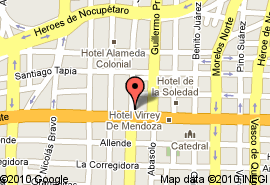
Looking
for a tailored-to-your-interests specialized tour in Mexico? Click
here: Tours.
